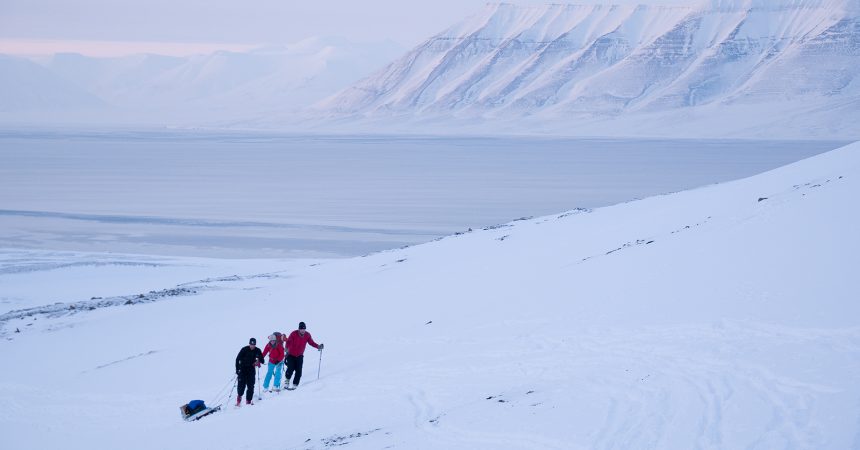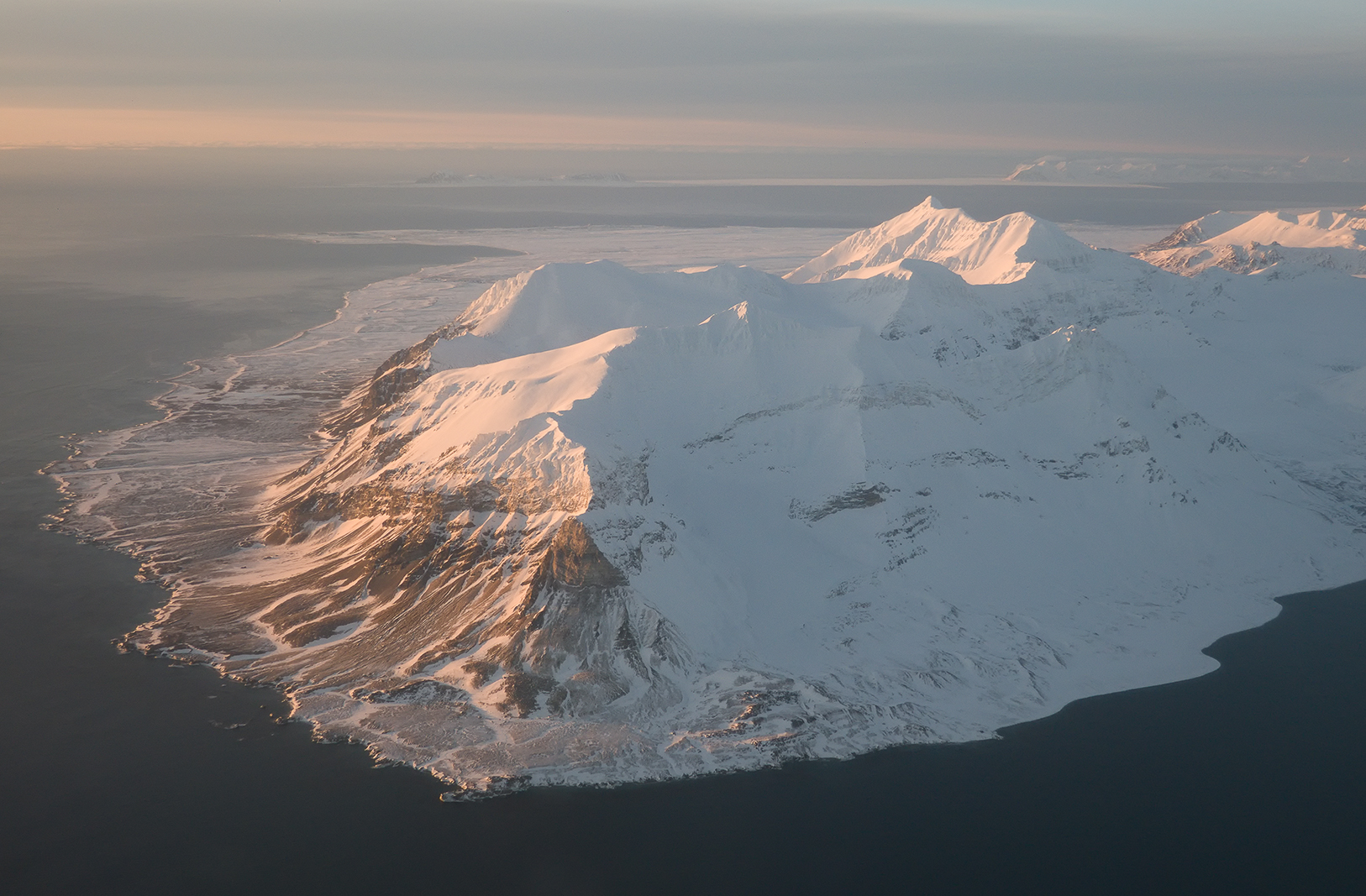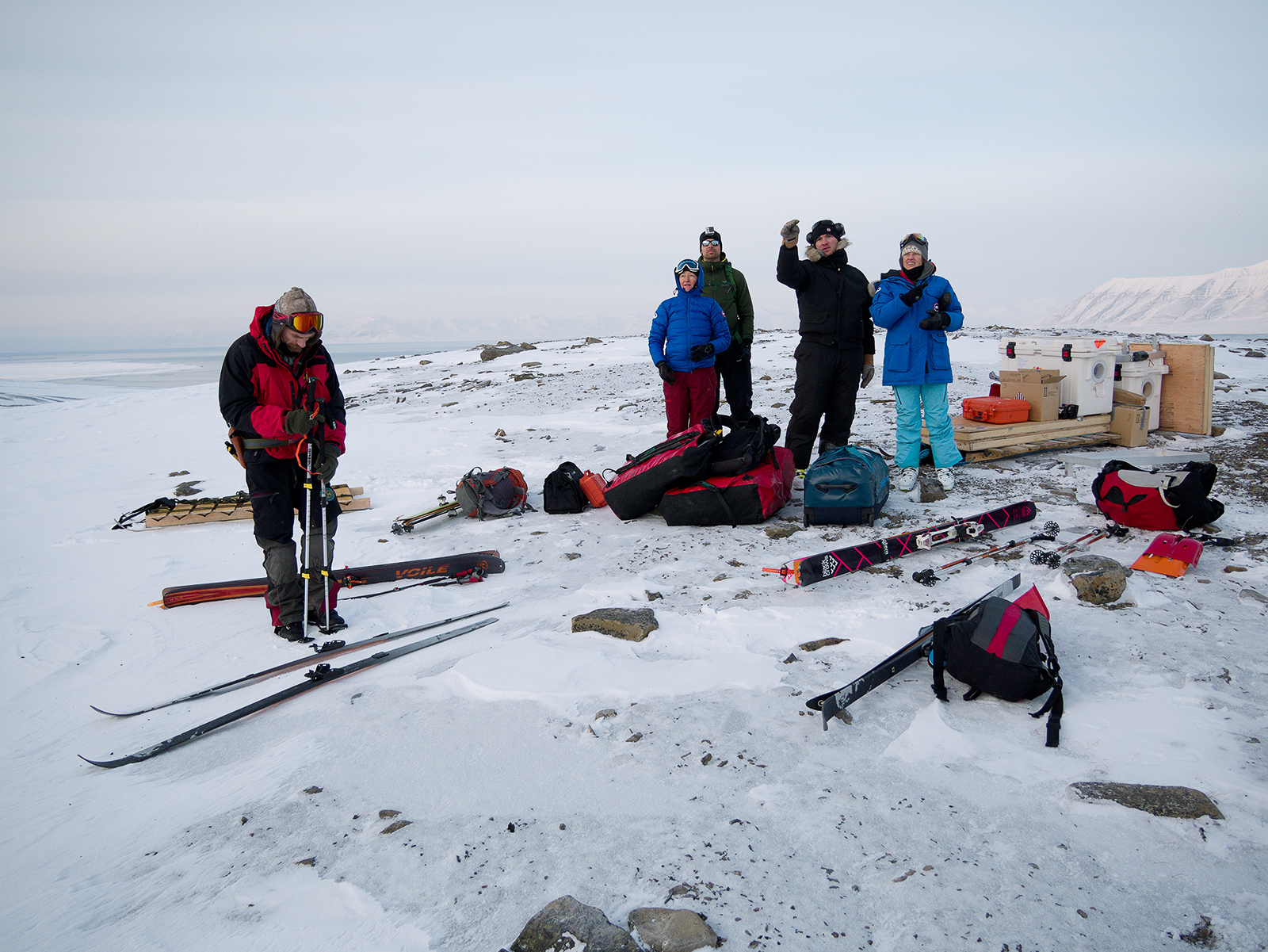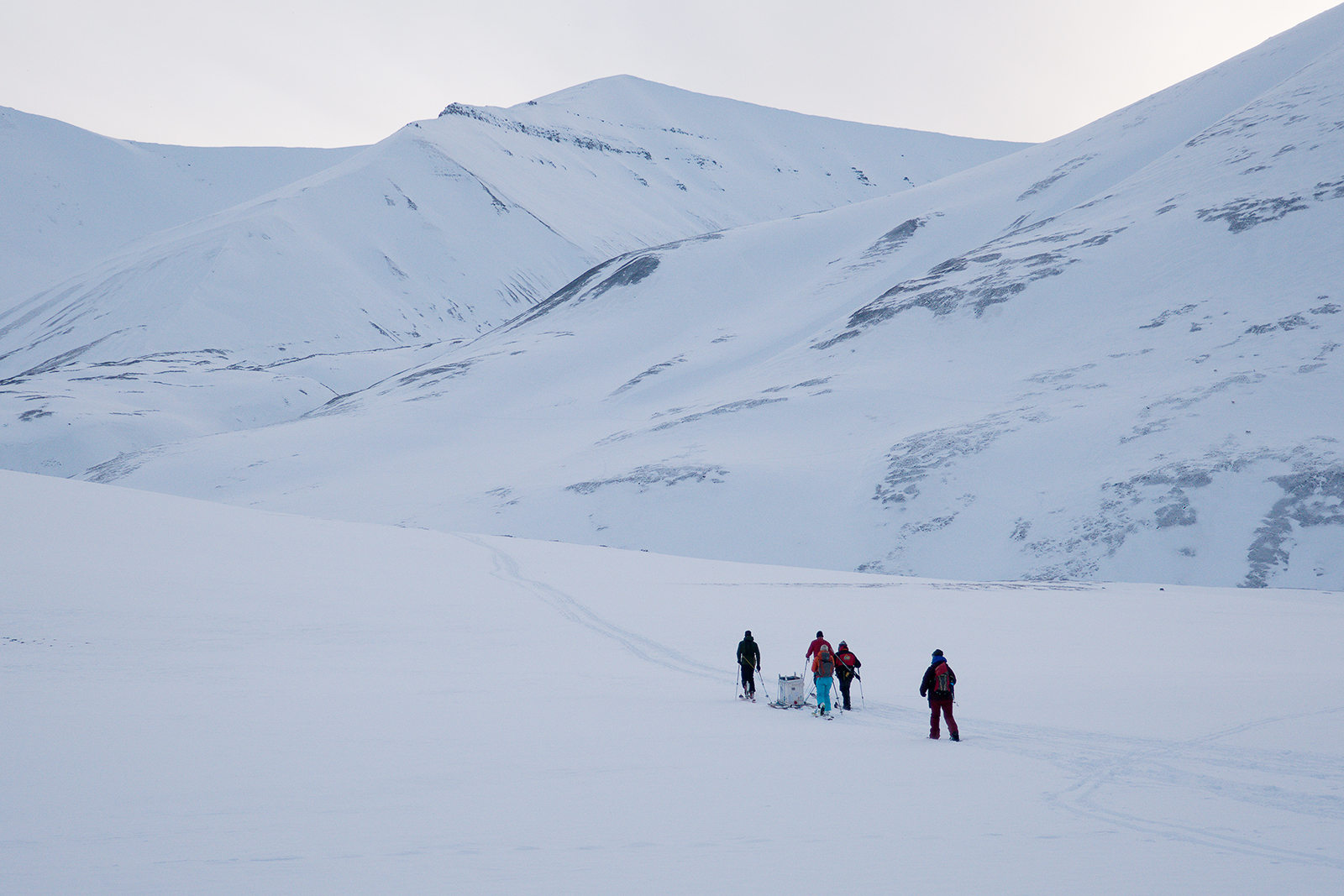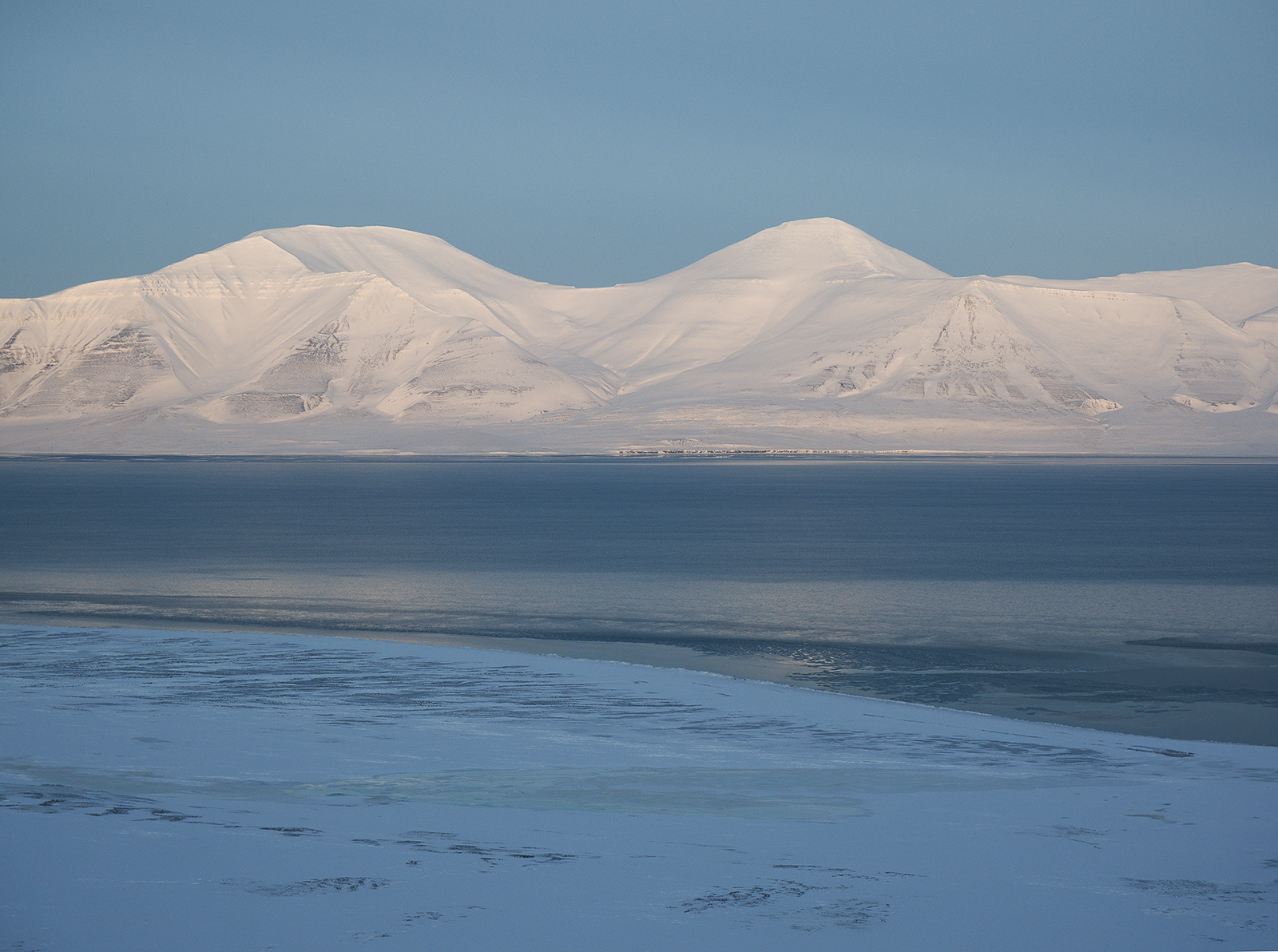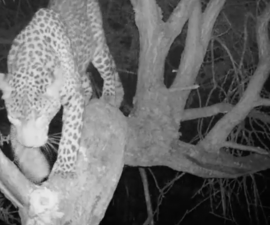In February, a team of biologists from San Diego Zoo Global and Polar Bears International, in collaboration with the Norwegian Polar Institute, visited Svalbard, a Norwegian archipelago in the high Arctic (71-80 degrees N). For a second year, the team deployed cameras to observe adult females and their cubs when they emerge from their dens in spring. The ongoing research is aimed at understanding how environmental changes may be influencing den emergence and behavior.
Head down, I stayed tucked over my gear, as the massive Super Puma engines wound up and the rotor wash created swirling eddies of white. Lifting off the ground in a cloud of fine snow, the helicopter slowly turned for Longyearbyen, Norway, and the sound of the engines gave way to the stillness of the frozen Arctic.
Here, the team and I assessed our gear and began to make a plan. A low-lying sun hung to the south, with rays of light drifting over the Spitsbergen island mountaintops, foreshadowing the long days of Arctic summer to come. In front of us lay the hills in which a pregnant polar bear had arrived only a few months before, to create a den in the snow bank and give birth to a new generation of polar bear cubs.
Strapping on our skis, we made a reconnaissance journey to the approximate location of the den, about half a mile from our landing site. The bear was outfitted with a GPS collar the previous year, but it had stopped transmitting in these hills back in December. Our in-field Norwegian Polar Institute colleague, Rupert Krapp, agreed with my suspicion that the collar likely was not transmitting through the deep snowpack of the den, and the bear’s last transmitted locations were sure to be very close to the den site.
After crossing a few ridges, I pulled the binoculars from my pack and began to scan the slopes. Polar bears denning in the snow usually choose embankments where the snow can accumulate by wind drift. Scanning higher up, I spotted a small hole punched through the surface of the snow. No tracks led in or out of the hole, which indicated that it had been made from within the snowbank.
I conferred with Megan Owen, associate director of Recovery Ecology at the Institute for Conservation Research, and she agreed that we had likely spotted the entrance to a polar bear maternal den. This was my first year on the project, while Megan has been focused on the study of maternal denning in Alaska and Norway’s Svalbard archipelago for a number of years. I felt elated that the months of preparation were paying off, and we would have an ideal site to observe a mother polar bear and her cubs emerging from their den.
The next task was to move our camera system into place. BJ Kirschhoffer from Polar Bears International (PBI) and I loaded the sled and formed a two-person pull team, and Krista Wright from PBI helped keep the sled oriented while traversing slopes. In a small way, I felt I was paying homage to the early research of Norwegian scientists Rasmus Hansson and Jorn Thomassen, who skied into polar bear denning areas around Svalbard in the late 1970s and spent weeks recording their observations of emerging mothers and cubs.
As we finished the camera setup and turned for home, below us lay a fjord, open and bare. In the days of Hansson and Thomassen, this fjord would have been frozen solid, and would have had seals inhabiting it for polar bears to hunt. Recently, fjords like these have been open water more often than ice—a sign of the impact of climate change.
Given that so much has changed since Hansson and Thomassen did their first surveys, continuing their work almost 40 years later is vital to understanding how a rapidly altering sea ice environment is impacting maternal denning. As the evening light painted the sky pink, my thoughts turned to the mother and her cubs we were leaving behind, and how they would fare in the months to come, with so little sea ice nearby.
Nicholas Pilfold, Ph.D., is a postdoctoral associate in Recovery Ecology at the Institute for Conservation Research, San Diego Zoo Global. Read his previous post, A Home Melting Away.

